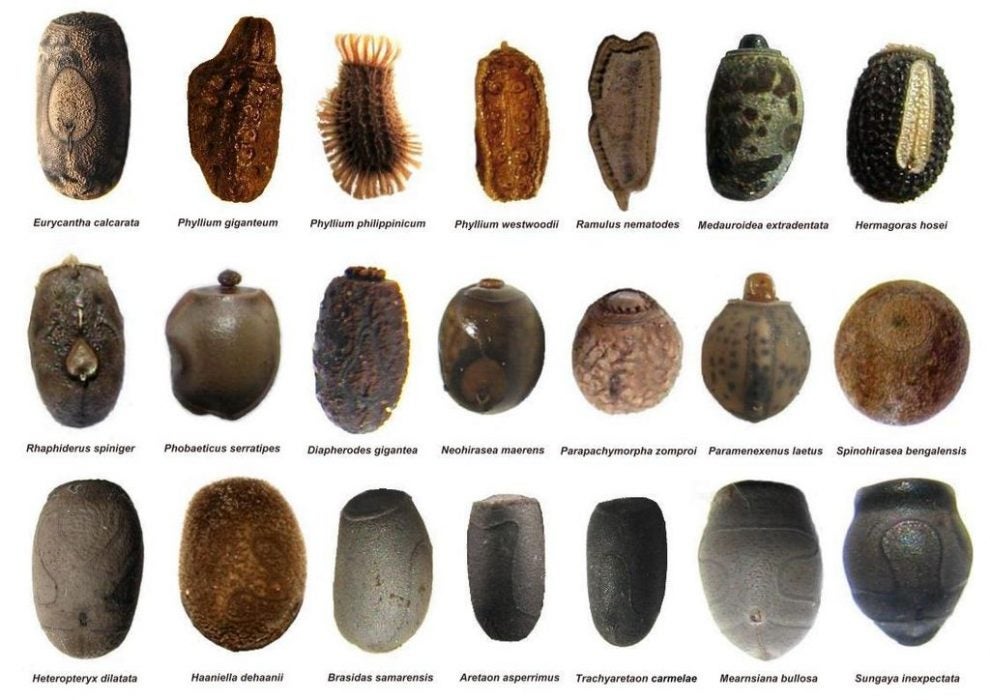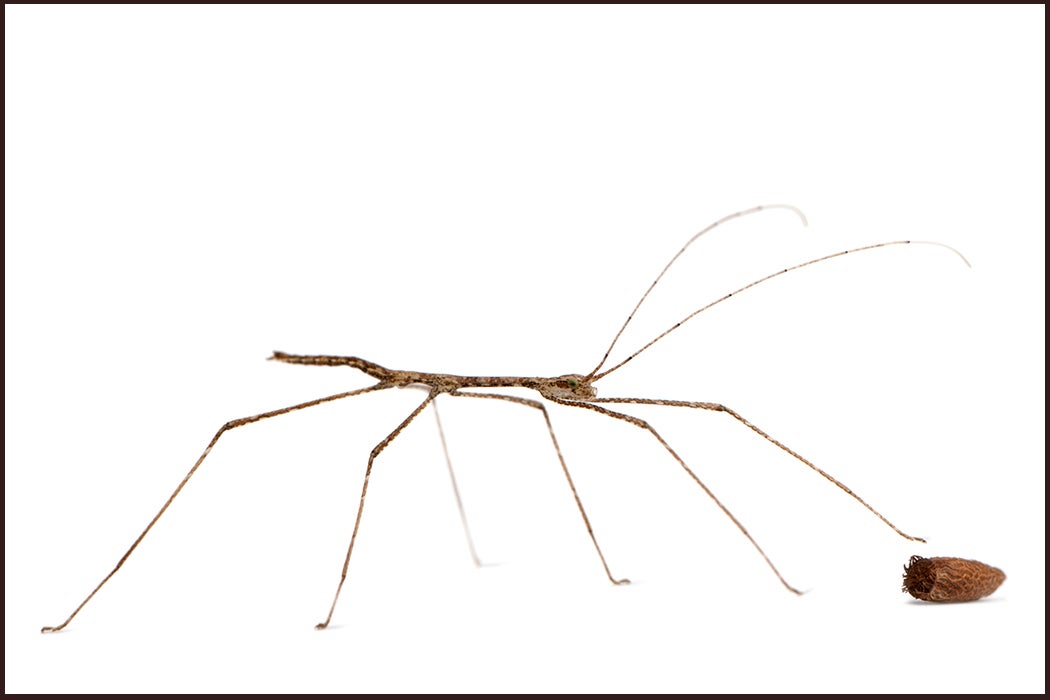Phasmids, commonly called stick insects, are herbivorous insects that uncannily resemble twigs or dead leaves. They range in size from tiny half-inch splinters to mighty half-meter walking tree branches, using their amazing camouflage to hide from predators and stalk their insect prey. But phasmids have one more trick up their sleeve.
Biologists L. Hughes and M. Westbory, writing in Functional Ecology, describe the amazing, or rather amazingly unremarkable, appearance of stick insect eggs. They vary by species, but some phasmid eggs look exactly like seeds. This poses a conundrum: why would an animal that looks so inconspicuous have eggs that resemble a tasty snack?
As Hughes and Westbory explain, for stick insects that leave their eggs on the leaf litter, the eggs are intentionally attractive. Eggs of these species have an unusual structure called a capitula, a lumpy appendage stuck to the end of the egg. Its function was a mystery until Hughes and Westbory compared the eggs to actual seeds, some of which have their own appendage called an elaiosome.

The elaiosome is filled with fat, with one main purpose: to attract ants. The ants take the seeds with elaiosomes back to their nests and bury them. Fooled by the capitula, they do the same with phasmid eggs. The buried eggs gain protection from parasitic wasps. Baby stick bugs then hatch safely beneath a couple centimeters of soil. The whole system is a great example of convergent evolution, when two completely unrelated organisms, an insect and a plant, independently evolve similar adaptations.
In fact, the resemblance between seed-mimicking eggs and actual seeds might even be more complex. Many plant seeds are irresistible food for birds. The birds eat the seeds, which survive digestion and then germinate in the bird’s feces. The otherwise immobile plant uses the bird to disperse its offspring. Entomologist Matan Shelomi, writing in the Journal of Orthoptera Research, decided to test if this strategy applied to phasmid eggs by feeding them to chickens and quails. Many phasmid eggs are coated in a tough material called calcium oxalate. The coating is probably mostly defensive, but it also requires strong acid—like that you’d fine in a vertebrate stomach—to break down. Alas, while the birds ate the eggs with gusto, the eggs did not survive being digested.
Shelomi pointed out, however, that he only tested two species of bird and a few different phasmids. He hypothesized that different combinations might provide different results. Sure enough, in 2017, a quartet of Japanese researchers fed eggs to a known phasmid predator, the Brown-eared Bulbul. A few of the eggs survived and hatched, proof that birds are indeed capable of dispersing phasmid eggs.
Editors’ Note: An earlier version of this article misidentified phasmids as carnivorous. They are in fact herbivorous.







